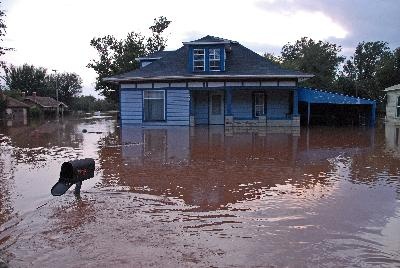Ensuring that adults have the literacy skills needed to survive and succeed in the 21st Century requires a comprehensive and preventive approach. First, to serve current needs, adult education programs must be research-based and accountable for results; second, to reduce the future need, accountability and high standards must be brought to schools at every grade level, including high school.
A new report from the National Assessment of Adult Literacy [NAAL] adds urgency to the task. "A First Look at the Literacy of America's Adults in the 21st Century" represents the first national findings on adult literacy since 1992. The report shows definite progress:
- Overall, average quantitative literacy skills rose 8 points from 1992-2003.
- Adults scoring "basic" or better i.e., showing at least those skills necessary to perform simple and everyday quantitative tasks rose from 75 to 79 percent.
- African Americans' prose and document literacy scores increased by 6 and 8 points, respectively.
- Asian/Pacific Islanders' prose literacy scores increased 16 points.
However, it also found areas where improvement was needed.
- Average prose and document literacy scores for Hispanic American adults fell by 18 and 14 points, respectively, between 1992 and 2003.
To meet the needs of adults who seek strong basic literacy skills or English language proficiency, the Department of Education is creating more effective and accessible learning options. The Department's Office of Vocational and Adult Education is committed to ensuring that all adults have the knowledge, career and technical skills necessary to succeed in the 21st Century.
The Department is convening education experts from the public and private sectors.
- Last month, the Department met with 13 community college presidents, adult educators and national experts to lay the foundation for new initiatives to increase the number of adults entering and completing community college career pathway programs.
- The Department will convene a 2006 national symposium to highlight sound policies and best practices.
- The Department also announced an effort to coordinate adult education across multiple federal agencies.
The Department has applied the principles of "No Child Left Behind" to adult education programs.
- An accountability system requires providers to measure learning through standardized assessments, and holds them accountable for improving the literacy skills of participants.
- Providers also are held accountable for helping participants earn GEDs, enter post secondary education, and obtain and retain employment.
- States and providers now use accountability data to improve classroom instruction.
- Over half the states have implemented or are developing academic content standards for adult learning.
The Department has made significant investments in research.
- Since 2001, the Department has invested $10 million in scientifically based research to identify effective interventions for teaching adults.
- Working at 80 sites in 16 states, the Adult Literacy Research Network is testing how proven reading instruction strategies for children can be adapted to accelerate learning by adults.
- Researchers are developing and testing new interventions to assist adult English Language Learners with low basic skills in both English and their native language
- Research is underway to identify promising approaches to improving math instruction and helping adult education participants continue on to post secondary education.
The Department has provided technical assistance and professional development.
- Investment in the Center for Adult English Language Acquisition was doubled to provide technical assistance and professional development to improve instruction for adult English Language Learners.
- The STudent Achievement in Reading (STAR) project developed a research-based "tool kit" of assessments and instructional strategies to help teachers improve pilot-tested reading instruction.
- The Adult Education Coordination and Planning project provides intensive technical assistance to six states to improve collaboration among state agencies supporting adult education and workforce training.
And the Department has created more convenient options for learning.
- In October, the Department expanded the Project IDEAL initiative (Adult Ed Online) to provide assistance for distance learning to all states.
- The Department has created online "tool kits" to help educators and business leaders design and implement work-based adult education programs (http://www.work-basedlearning.org/) and to help adult educators build community-wide collaborations to expand adult learning options (http://www.c-pal.net/).
- With assistance from the Department of Education, the National Association of Manufacturers is identifying notable employer-based models for improving English language proficiency of immigrants.
- The Department is developing online professional development to assist adult education teachers working in faith- and community-based organizations that do not receive federal funds.
The NAAL report found that nearly a fourth of all American adults with "below basic" prose literacy skills had been awarded a high school diploma. Many were casualties of high schools that badly need reform, passed along from grade to grade, then given a diploma they could not read.
- About a million students drop out of high school annually.
- The dropout rate for Hispanic students is nearly four times higher than that of white students.
- A Pew survey found that only 16 percent of Hispanic students who speak English well drop out of school, compared to 59 percent of those who do not.
The President's High School Initiative would extend the principles of the "No Child Left Behind Act" high standards, accountability, annual measurement and increased resources to our high schools. And his Striving Readers Program would provide an eight-fold increase in federal funds, to $200 million, to help incoming high school students struggling with reading. Meanwhile, the "No Child Left Behind Act" is working in earlier grades to give students the skills they need to advance in school and in life.
- According to the Nation's Report Card, 4th- and 8th-grade math scores are at all-time highs.
- More progress in reading was made among 9-year-olds in the last 5 years than in the previous 30 years.
- The achievement gap between white and Hispanic 4th-graders narrowed to an all-time low in reading, and matched its all-time low in math.
- Reading scores for 4th-grade English Language Learners rose 20 points in the last five years more than three times the average of their peers.
 Print
Print Email
Email








